Journal list menu
Export Citations
Download PDFs
ISSUE INFORMATION
Issue Information
- Pages: 319-320
- First Published: 21 October 2023
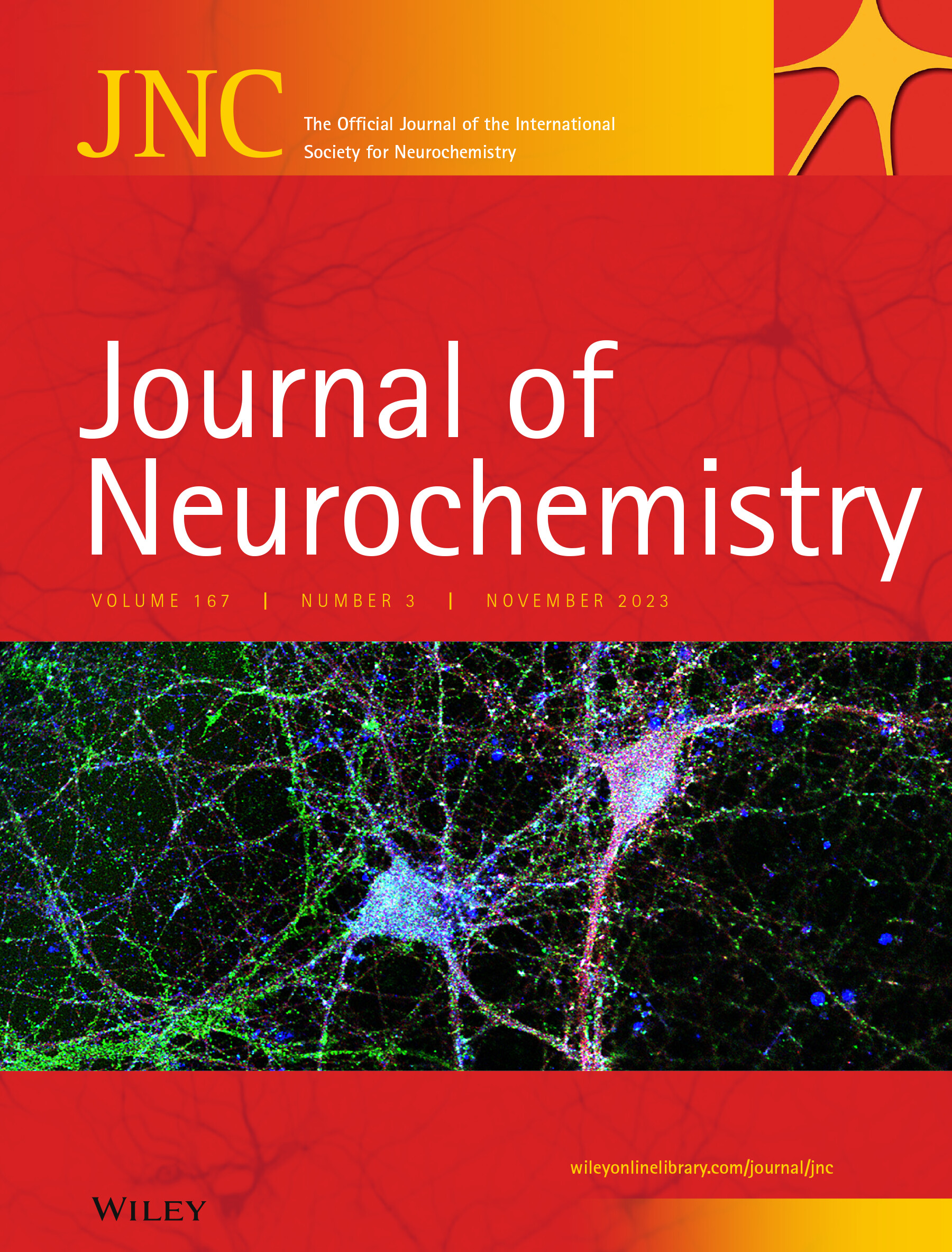
Front cover
Mechanisms of synapse loss are not well understood but are important for information erasure in the brain. Abdel-Ghani et al. show that neuronal hyperexcitation initiates homeostatic excitatory synapse dismantling via Polo-like kinase 2-dependent phosphorylation and degradation of the cellular adhesion molecule N-cadherin, along with its partner amyloid precursor protein (APP). Understanding de-adhesion of synapses will help elucidate synapse loss during normal physiology as well as under pathological conditions.
Image content
The cover image illustrates coordinated removal of N-cadherin (green) and APP (blue) together with the marker of excitatory synapses PSD-95 (red) in primary hippocampal neurons during conditions of hyperexcitability.
Read the full article ‘Plk2 promotes synaptic destabilization through disruption of N-cadherin adhesion complexes during homeostatic adaptation to hyperexcitation’ by M. Abdel-Ghani, Y. Lee, L. A. Akli, M. Moran, A. Schneeweis, S. Djemil, R. El Choueiry, R. Murtadha and D. T. S. Pak (J. Neurochem. vol. 167 (3), pp. 362–375) on doi: 10.1111/jnc.15948
REVIEWS
Thirty years of BDNF study in central myelination: From biology to therapy
- Pages: 321-336
- First Published: 25 September 2023
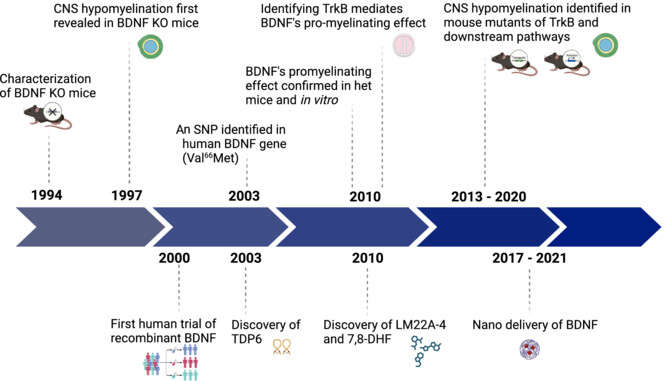
Being the highest expressed neurotrophic factor in the mammalian brain, brain-derived neurotrophic factor (BDNF) is essential to both health and diseases. 2024 marks the 30th year of BDNF research in myelination. Here, we share our perspective on the 30-year history of BDNF in the field of central nervous system (CNS) myelination from phenotyping to therapeutic development, focusing on genetic evidence regarding the mechanism by which BDNF regulates myelin formation and repair in the CNS. This review discusses the current hypotheses of BDNF's action on CNS myelination and raises the challenges and opportunities of developing BDNF-based therapies for neurodegenerative diseases.
Fundamental Neurochemistry Review: Copper availability as a potential therapeutic target in progressive supranuclear palsy: Insight from other neurodegenerative diseases
- Pages: 337-346
- First Published: 06 October 2023

Progressive supranuclear palsy (PSP) is an atypical parkinsonism for which effective treatments are lacking due to incomplete understanding of the associated biochemical events that lead to neuronal death. Herein Billings et al. speculate that compromised availability of essential copper may provide opportunity for novel therapeutic intervention. Although direct data for links between copper and key pathological features of PSP are relatively limited, it is proposed that discoveries related to Parkinson's disease (PD) and amyotrophic lateral sclerosis may provide useful insights.
Heme oxygenase-1: The roles of both good and evil in neurodegenerative diseases
- Pages: 347-361
- First Published: 25 September 2023
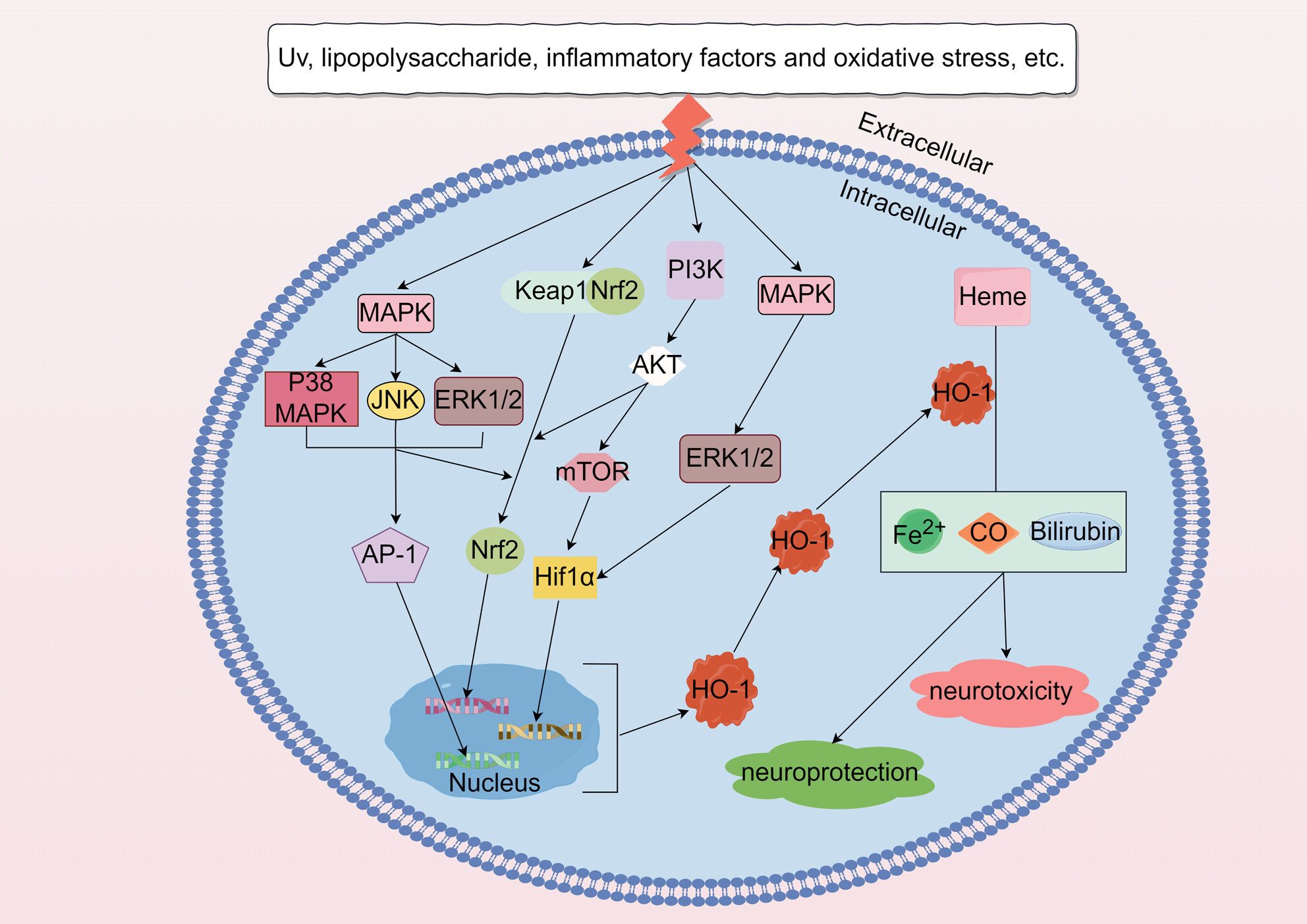
Heme oxygenase-1 (HO-1) can cleave heme to produce carbon monoxide (CO), ferrous iron (Fe2+), and bilirubin (BR). In previous studies, HO-1 was thought to have anti-inflammatory, anti-apoptotic, and other protective effects. However, recent studies have found that HO-1-derived metabolites can cause intracellular oxidative stress, mitochondrial damage, iron death, and increased autophagy, leading to the occurrence of neurodegenerative diseases. Because of its particularity, it is very important to understand its exact mechanism. This will help in the development of new therapies for neurodegenerative diseases and is crucial for the development of new treatment strategies and biomarkers.
ORIGINAL ARTICLES
Plk2 promotes synaptic destabilization through disruption of N-cadherin adhesion complexes during homeostatic adaptation to hyperexcitation
- Pages: 362-375
- First Published: 31 August 2023
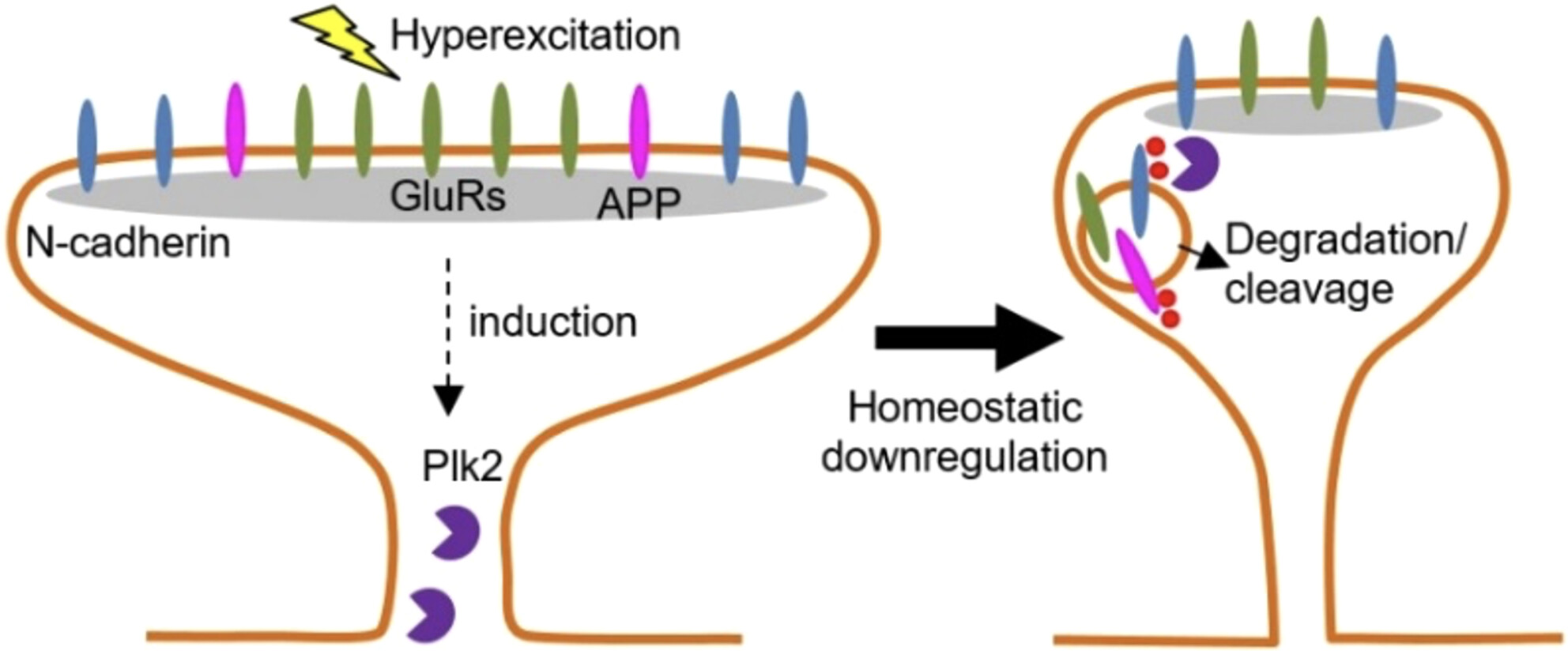
In this study, we show that neuronal hyperexcitation up-regulates the activity-dependent homeostatic regulator polo-like kinase (Plk2), which phosphorylates N-cadherin, a synaptic cellular adhesion molecule. This event triggers N-cadherin cleavage by metalloproteases and calpains and ultimate lysosomal degradation. Additionally, N-cadherin and the Alzheimer's disease-related factor amyloid precursor protein (APP) are associated at excitatory synapses. Degradation of N-cadherin accompanies down-regulation of APP together with synaptic constituents PSD-95 and glutamate receptors (GluRs), leading to homeostatic synaptic destabilization and dismantling. Understanding N-cadherin metabolism will help elucidate mechanisms of synapse loss during normal learning and memory as well as under pathological conditions.
Tyrosine hydroxylase phosphorylation is under the control of serine 40
- Pages: 376-393
- First Published: 30 September 2023
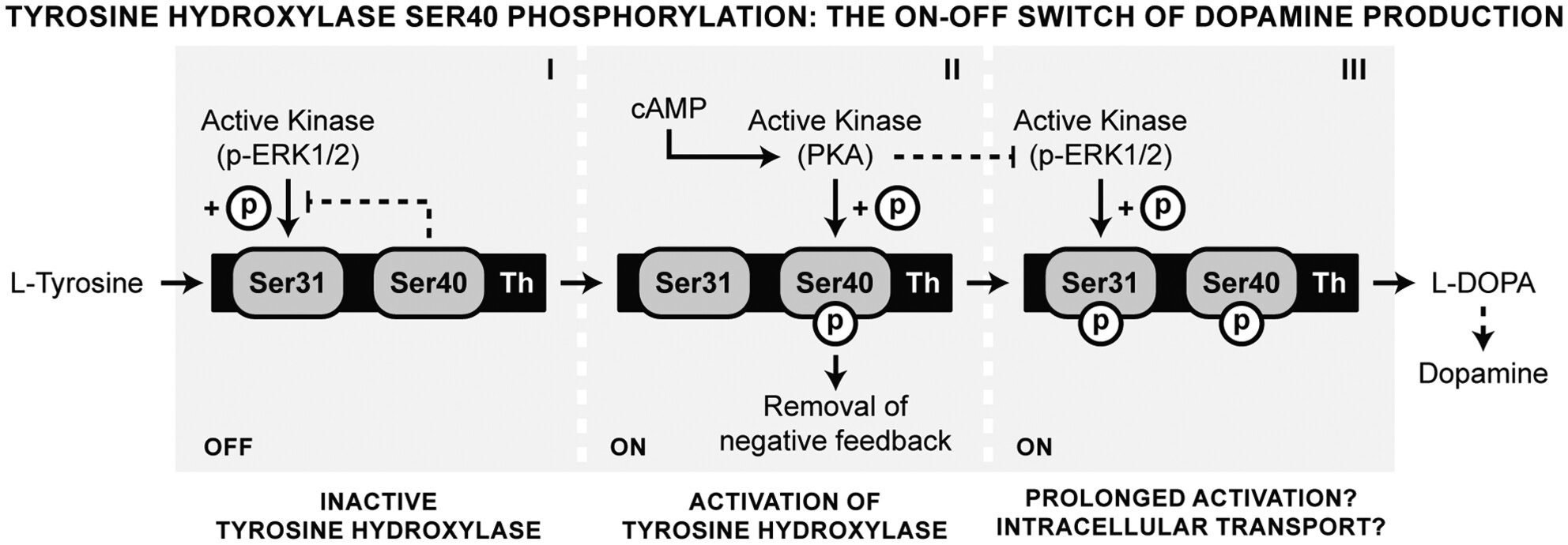
Tyrosine hydroxylase (TH) catalyzes the initial and rate-limiting step in the biosynthesis of the neurotransmitter dopamine. Our study underscores Ser40 phosphorylation as the pivotal “on–off switch” governing TH activity and dopamine production. Our investigation challenges prior assumptions, revealing that Ser40 phosphorylation is the initiating step, dictating the subsequent Ser31 phosphorylation. These findings illuminate the crucial role of Ser40 in TH regulation offering new insights into the delicate control of neurotransmitter production.
Strain-dependent role of copper in prion disease through binding to histidine residues in the N-terminal domain of prion protein
- Pages: 394-409
- First Published: 30 September 2023
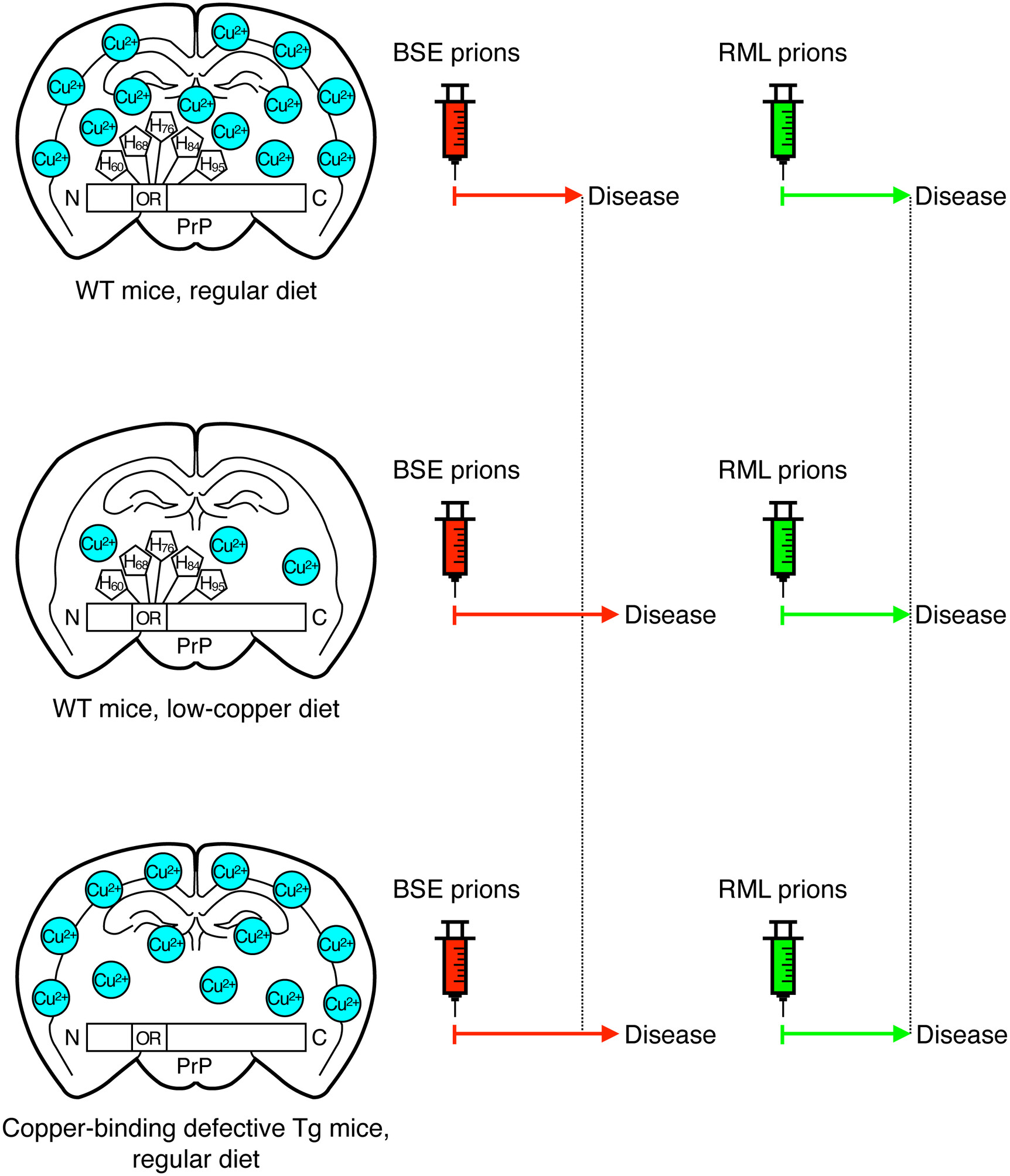
Mice fed a low-copper diet developed prion disease slightly but still significantly later than those fed a control regular diet after intracerebral inoculation with BSE prions, but not with RML prions. Transgenic mice expressing a copper-binding defective mutant PrP also developed the disease with slightly elongated but still significant incubation times after inoculation with BSE prions, but not with RML prions. These results suggest that copper could play a distinct, but minor, role in prion pathogenesis in a strain-dependent manner through binding to PrP.
Effects of HMGB1/RAGE/cathespin B inhibitors on alleviating hippocampal injury by regulating microglial pyroptosis and caspase activation in neonatal hypoxic–ischemic brain damage
- Pages: 410-426
- First Published: 27 September 2023
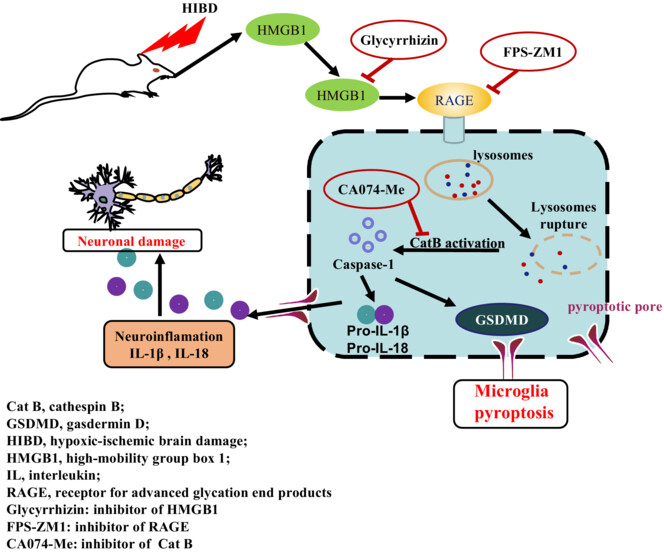
This study aimed to investigate whether HMGB1 is associated with microglial pyroptosis, and determine the detailed mechanism of this process in neonatal rat pups with HIBD and BV2 microglia subjected to oxygen–glucose deprivation. It was found that inhibiting HMGB1 not only alleviated neuronal damage in the hippocampus 72 h after HIBD but also ultimately improved neurobehavior in adulthood. It was concluded that HMGB1/RAGE/cathespin B inhibitors could alleviate the hippocampal injury via regulating microglial pyroptosis and caspase activation in HIBD, hence reducing the release of proinflammatory mediators, which destroy hippocampal neurons and induce spatial memory impairments.
Dense dopaminergic innervation of the peri-infarct cortex despite dopaminergic cell loss after a pure motor-cortical stroke in rats
- Pages: 427-440
- First Published: 21 September 2023
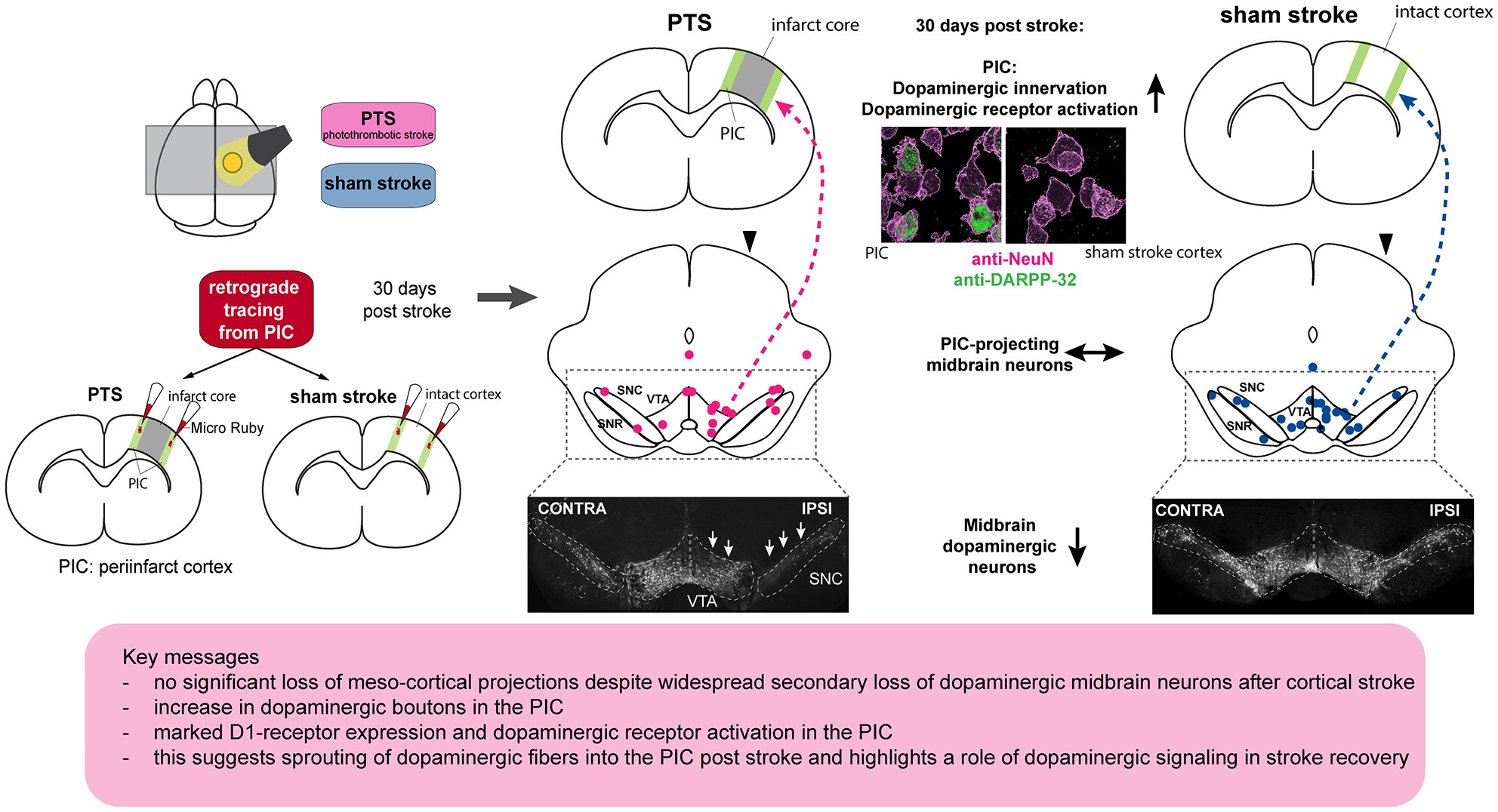
After an ischemic stroke, the peri-infarct cortex (PIC) undergoes plastic changes that facilitate motor recovery. Dopaminergic signaling is thought to support this process. However, ischemic stroke also leads to the remote degeneration of dopaminergic midbrain neurons, possibly interfering with this beneficial effect. In this study, we assessed the reorganization of dopaminergic innervation of the PIC in a rat model of focal cortical stroke. Our data suggest a sprouting of dopaminergic fibers into the PIC and point to a role for dopaminergic signaling in reparative mechanisms post-stroke, potentially related to recovery.
Effects of anti-tau immunotherapy on reactive microgliosis, cerebral endotheliopathy, and cognitive function in an experimental model of cerebral malaria
- Pages: 441-460
- First Published: 09 October 2023
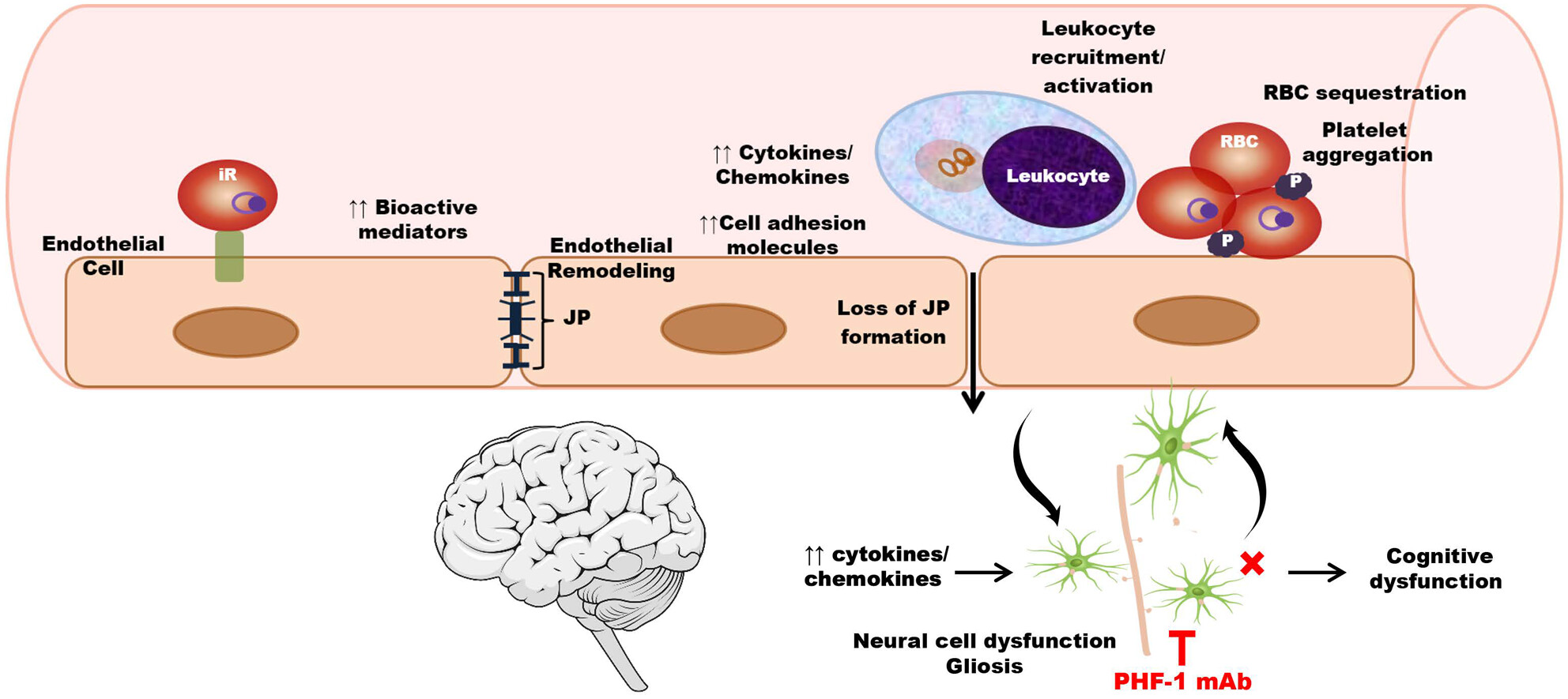
Infection of mice with Plasmodium berghei ANKA, a murine malaria species, induces remodeling of cerebral endothelial cells, a process which primes the endothelium for the recruitment of inflammatory cells and infected red blood cells to the cerebral microvasculature. Vascular pathology also leads to neuroinflammation, involving the activation of glial cells and abnormal expression of tau proteins in neurons, leading to cognitive dysfunction. Passive immunization to pathological tau with an anti-PHF-1 monoclonal antibody mitigates microglial activation and malaria-induced endotheliopathy, ultimately resulting in the preservation of cognitive function. iR, infected red blood cell; JP, junctional protein; RBC, red blood cell; P, platelet; PHF-1, paired helical filament 1.
α-Synuclein induces deficiency in clathrin-mediated endocytosis through inhibiting synaptojanin1 expression
- Pages: 461-484
- First Published: 03 October 2023
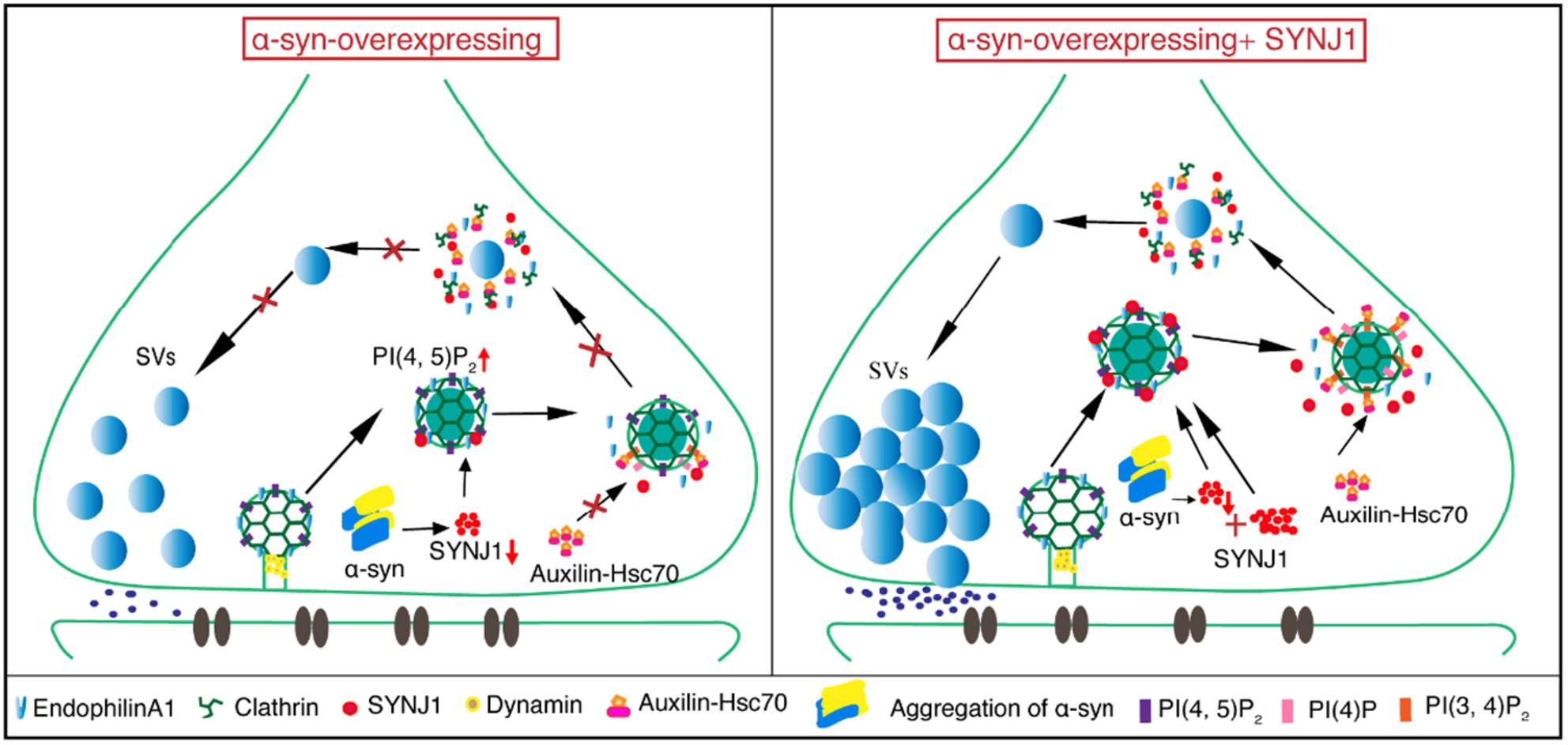
α-Synuclein (α-syn) over-expression defected clathrin-mediated endocytosis (CME) via down-regulating synaptojanin1 (SYNJ1) and related protein expression. SYNJ1 is the key protein in alleviating disrupted synaptic function caused by α-syn through interfering with vesicle recycling. Over-expression of SYNJ1 can restore the extent of synaptic vesicle cluster and CME. Moreover, we have demonstrated that SYNJ1 ameliorating CME activity is mediated by phosphatidylinositol-4,5-bisphosphate [PI(4,5)P2] homeostasis simultaneously. Thus, maintenance of normal endocytic processes requires an adequate concentration of SYNJ1. This work identified the molecular mechanisms underlying α-syn-induced CME dysfunction and provided a potential therapeutic target for treating Parkinson’s disease.





